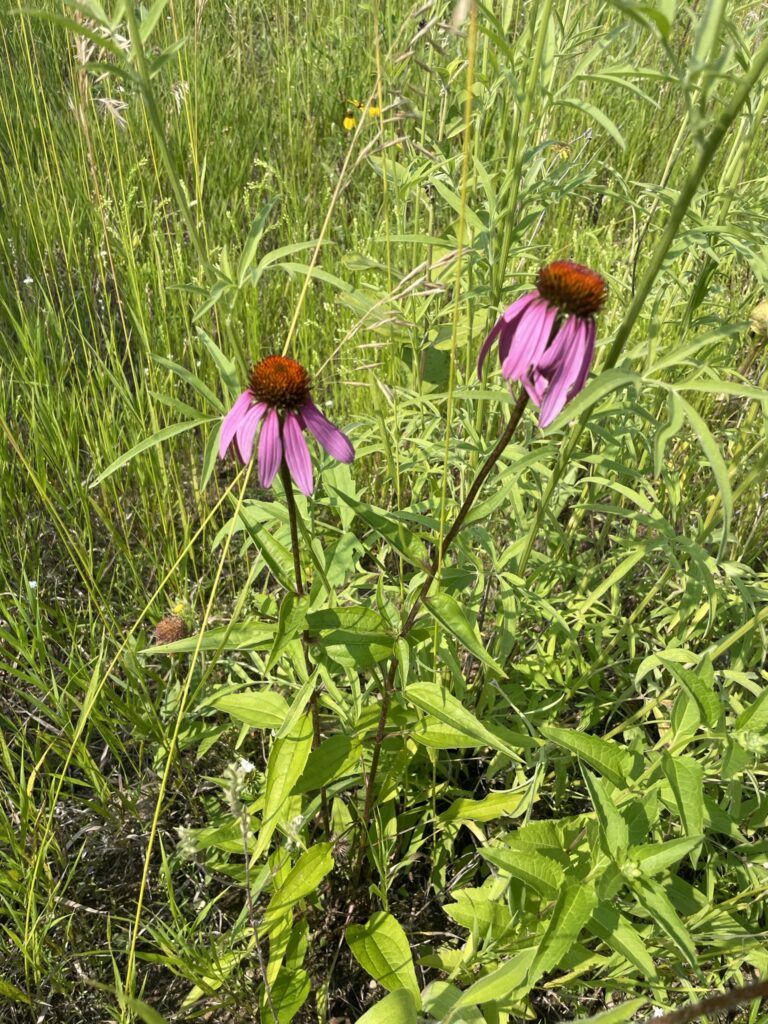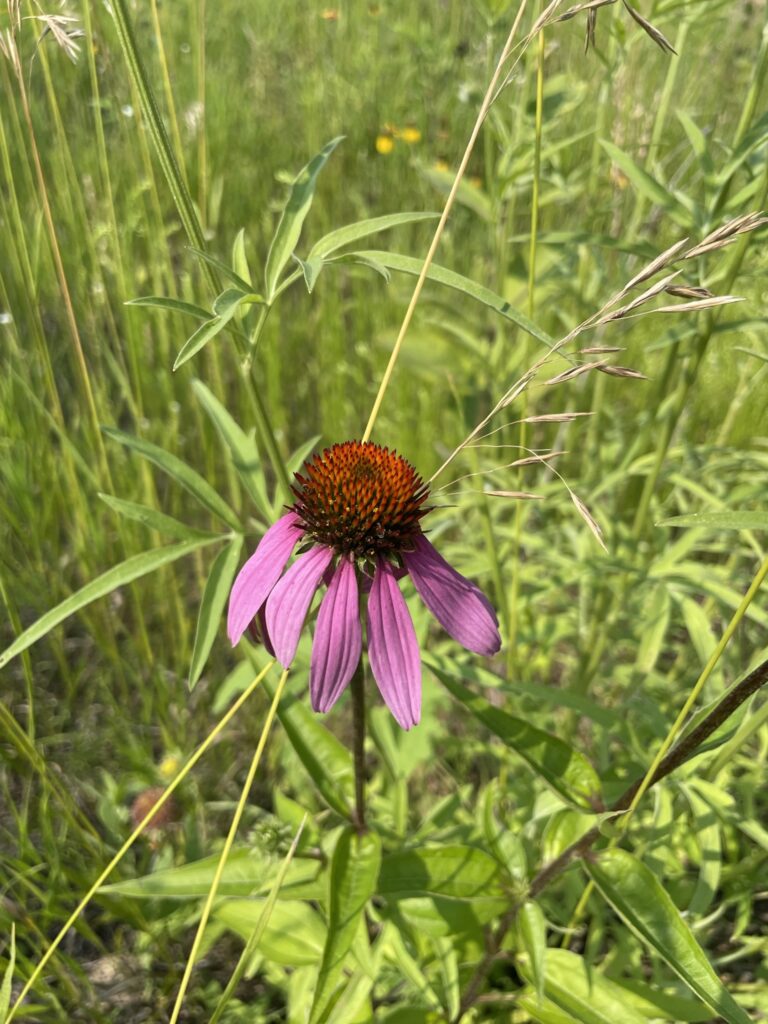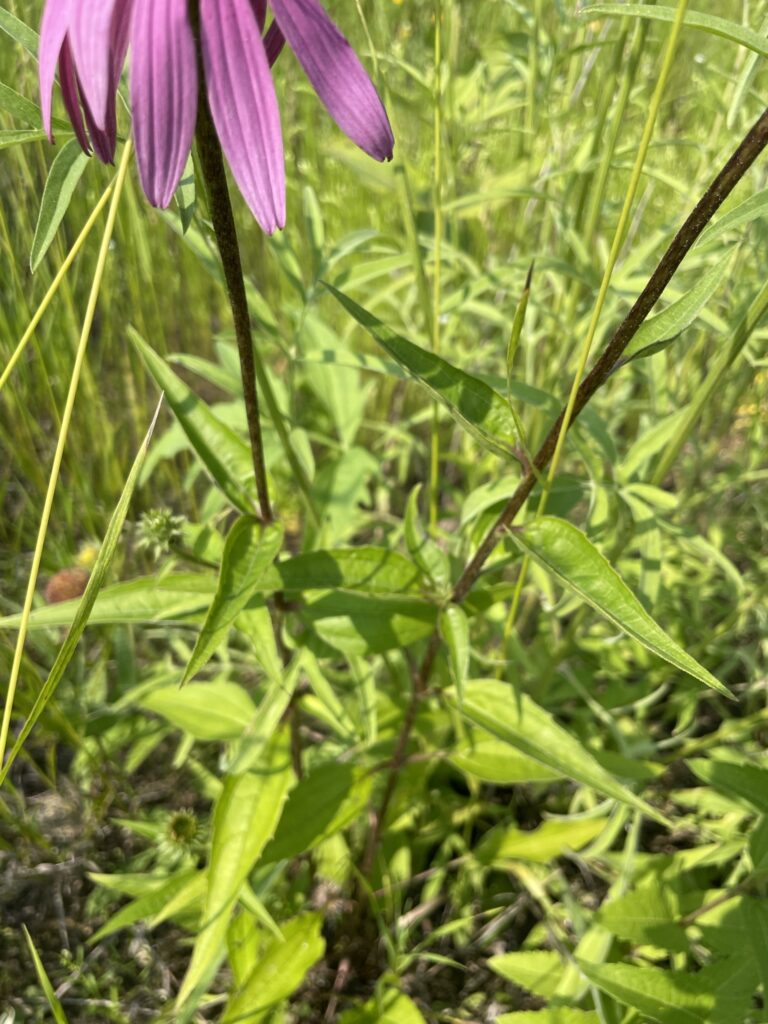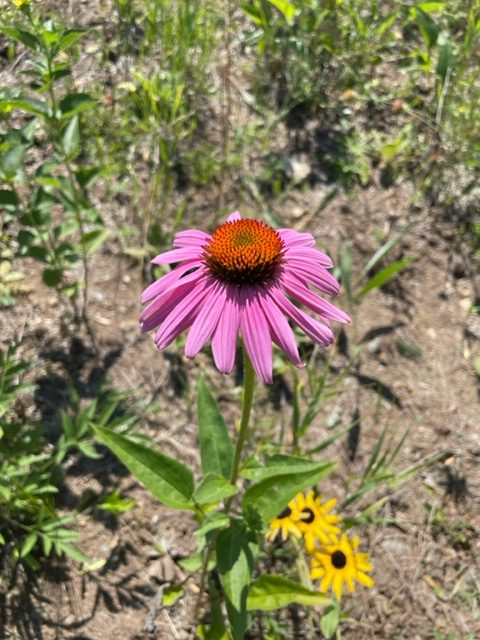


Native To State: NO
Naturally Occurring: NO
Description
Echinacea purpurea (Purple Coneflower) is a perennial herbaceous plant belonging to the Asteraceae family. Here are some key identification characteristics:
Appearance: Purple coneflower is a robust herb with multiple stems that can reach heights of 2 to 5 feet (60 to 150 centimeters). The stems are typically unbranched and arise from a basal rosette of leaves.
Leaves: The leaves of Echinacea purpurea are lance-shaped and have toothed margins. They are arranged alternately along the stems.
Flowers: The plant produces striking daisy-like flowers with prominent spiky, reddish-brown central disks and ray florets that are purple to pink in color. The ray florets are drooping and have a slightly reflexed appearance, similar to those of Echinacea angustifolia.
Inflorescence: The flowers are held on top of the stems in solitary heads, each surrounded by a ring of green bracts.
Blooming Period: Purple coneflower blooms from mid-summer to early fall, attracting various pollinators like bees, butterflies, and birds to its nectar-rich flowers.
Habitat: This species is native to eastern North America and can be found in a variety of habitats, including prairies, meadows, and open woodlands. It prefers well-drained soils.
Distribution: Purple coneflower is found in regions ranging from eastern Canada to the central and eastern parts of the United States.
Conservation: While not considered a threatened species, preserving its natural habitats is essential for maintaining healthy populations of purple coneflower.
Other Species: Echinacea purpurea is part of the Echinacea genus, which includes other coneflower species with diverse characteristics.
Purple coneflower is celebrated for its vibrant and eye-catching flowers, making it a popular choice for gardens and landscapes. Its resilience, ease of cultivation, and potential medicinal properties have contributed to its widespread popularity as both an ornamental plant and a herbal remedy.
Occurrence
Seeded in prairie areas

